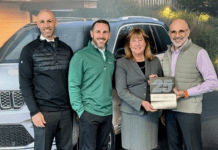It’s no secret, the automotive business has been struggling for years with low-profit margins and employee turnover now hitting an all-time high of 46%. However, dealers are often hesitant to talk about the actual root cause of the issue. Cox Automotive’s 2019 Dealership Staffing Study found, “with an average cost of $10,000 per new hire and an annual turnover rate as high as 67% for sales positions, a dealership with 100 salespeople can lose $670,000 a year…not to mention the knowledge and customer relationships that walk out the door with that employee.”
Fixed costs are fixed costs. But when it comes to your financial statement, what variable expense is more than $55,000 each month that you can actually control? The answer is none.
Now for the actual scary part. I believe that number is substantially underestimated because of how many dealership activities are not being accounted for which impact profitability more than anything else. Turnover is the result of missing structure within a dealer’s internal communication. This is a result of lack of care, or more often, a lack of focus for the development of employees, which negatively impacts brand value. Employees control what customers are willing to pay for a vehicle on your lot versus another store down the street. If dealers don’t wake up and decide to start focusing on the longevity of their business, they are going to continue to struggle.
Turnover should be a top business priority
I have been blessed to work with some outstanding teams over my career. One of those teams achieved No. 1 dealer in the state 15 years in a row selling 5,500 vehicles per year. Another team took the second-worst store to the fastest growing dealership in the country that same year. A common denominator between those dealerships’ success: we made employee turnover a top priority. It’s critical to dealership success.
However, the biggest struggle dealers face when trying to fix turnover is figuring out where to start. High employee turnover is often a part of a dealership before new leaders even take over a store. If the average industry turnover within sales is 67%, then the majority of leaders are dealing with this problem. We must take a step back, address the issue, and calculate how turnover is truly costing each dealership.
Drew Fortin, people management expert and VP of Sales & Marketing at The Predictive Index, gives a great overview of how to calculate employee turnover cost. He also states, “when calculating employee turnover cost, there are several data points you’ll need to calculate to accurately account for the lost productivity of the open position (including lost productivity of those covering for the position), recruiting and talent acquisition expense, onboarding and orientation, and new-hire ramp-up time.” You can see how turnover expenses can quickly go well beyond the average $6700,000 in gross profit lost every year by dealerships.
How to get a handle on employee turnover

After getting a clear picture of how much employee turnover is truly costing you, you need to figure out what you’re willing to commit to seeing it resolved. The implementation and commitment to follow through can be challenging. It’s where most dealers fall short and can never get ahead of the problem of losing people, which is the driving factor of declining performance. I challenge you to set yourself apart and go fix the issue.
The second step dealers must take is to get their people involved and quickly. One of my favorite things to do when taking over a new operation is hosting a breakfast meeting with at least one person in every department throughout the entire store. I send an invite at least a week in advance explaining what I’m trying to accomplish and the vital role employees will play to make it successful. Meetings like this are an opportunity to make your employees feel valued and significant and are a great start to fixing the turnover problem. If given the opportunity, your employees will shed light on the issues that you will now be able to fix.
What I found through doing this multiple times was our employees valued things that weren’t even on my radar. We forget that new hires want to know the dress code. They want to know where to park. Who should they go to if they have a specific problem? There were three consistent areas that every team came up with during this collaboration:
- Feeling valued via recognition
- Seeing a clear path to growth opportunities
- Training (or lack thereof)
Your people want training, and not just your salespeople. A recent study by CareerBuilder.com shows that a whopping 58% of managers (across all industries) said they didn’t receive any management training. This is completely unacceptable if you want to run a winning culture. Without proper training, sales managers often hide behind the excuse that they didn’t have time to train or do one-on-ones. And in their defense, they often were never trained so they have no reference on how to train or coach people. Often they were great salespeople who were promoted to fill a seat. Dealers are promoting people faster and stretching these managers thinner than ever before.
Related: What Does Staff Turnover Actually Cost the Dealership?
Training isn’t just important, it’s vital
When talking with operators I often ask how much they are spending on marketing to acquire customers to come to their store (either virtually or physically). It’s often a significant amount of their budget. Yet, based on the turnover percentage, dealers are often letting an underdeveloped salesperson they hired in a panic (because they’re short five salespeople and “are missing business every day”) be the deciding factor in the success or failure with those customers, and a dealer’s brand and profitability.
An interview with a potential candidate could take anywhere from 30 minutes to 2 hours if the candidate is someone you are trying to recruit, if not longer. This can cost dealers multiple deals during that time and some operators don’t ever realize that. When you really start to go through the store and try to quantify how much it costs because of the extra conversations explaining something that should have been communicated from the beginning, or having salespeople left without support. This creates the bad habits that drive the turnover problem within the industry.
Having to constantly replace employees and a lack of training creates missed opportunities every day because there are so many broomed customers that managers never actually get to see — over the phone and on the lot.
It all starts at onboarding
The salesperson turnover problem is a desperate issue needing to be fixed, but management turnover is not too far behind. Margins have decreased, which means managers are making less money. They don’t want to go backward in pay, so they look for the next company they feel they have the best chance of making what they previously made. All the while they are leading teams, and in some instances, being a toxic employee before leaving. If this is recurring, how do you ever expect to fix your culture? Onboarding with effective training is something you owe your people and is now more vital than ever to get implemented. The time is now and you must act fast.
In the end, the most rewarding things in our careers are often the toughest to do. You must be committed and more disciplined than you ever have been to create the winning culture you promise your people. As dealers, we must always be growing, learning, and focusing on the most important piece of our business. That is our people. Your people will help you down the path, they just need you to guide them.
About Zach McVicker, CEO of Onboardian
A seasoned veteran in automotive and RV operations, Zach McVicker believes in developing successful habits from the start to create a winning culture through your people. He is founder of Onboardian, an innovative sales onboarding and training platform for automotive dealers. Prior to starting his company, Zach was a top leader in Camping World, Penske Automotive Group, and the Tom Wood Organization to name a few. He played a vital role in helping take a single point Camping World store to $65M in revenue, leading the country in sales volume in 2018 and No. 1 in net profit 9 out of 12 months. Previously, he worked for one of the largest auto dealer groups in the world before helping the second worst Honda dealerships in Indiana to the fastest growing store in the country in 2016. You can connect with Zach on LinkedIn and YouTube.
Did you enjoy this article from Zach McVicker? Read other articles from him here.


While you’re here, don’t forget to subscribe to our email newsletter for all the latest auto industry news from CBT News.








